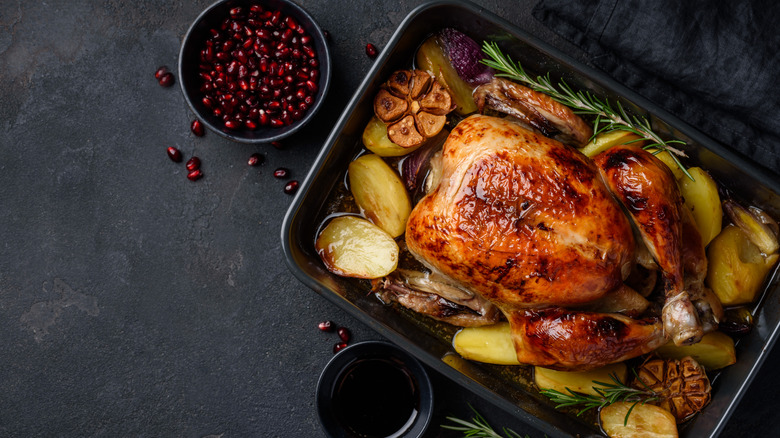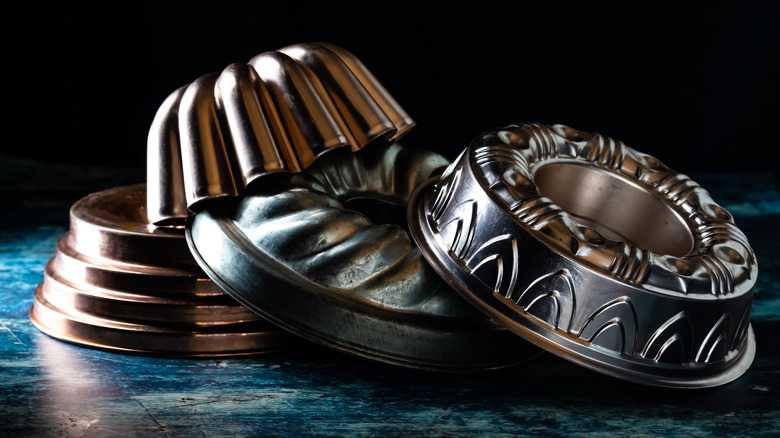The Baking Pan You Can Use For Perfect Roast Chicken
Whether it's a normal weeknight dinner or a special occasion celebration, roast chicken is always a great centerpiece to your table. It's easy enough to prepare, tastes like pure comfort, and looks extra elegant compared to chicken pieces. In fact, one perk of cooking a whole chicken versus chicken pieces is the money you save. According to Baltimore Food Shed, whole chickens are cheaper per pound and use less packaging. Another big perk is learning how to break down a chicken yourself, as this is an essential kitchen skill to know (via Serious Eats).
Furthermore, roasting chicken also has its flexibility. By that, we mean that you don't necessarily have to have a roasting pan, as this type of kitchen cookware takes up space and can be rather pricey. Also, if you're just not in the mood to dig for it in the drawer under your oven, there is one type of pan that's surprisingly ideal for a roast chicken and that is a Bundt pan.
A Bundt pan for your chicken needs
According to Kitchn, while a Bundt pan is typically made for cakes, it is a wonderful way to mimic a beer can chicken in the sense that it allows the chicken to stand upright while roasting. Another big perk is that when adding vegetables to the bottom of the Bundt pan, the drippings from the chicken seep down into the bottom and naturally infuse deliciously savory flavor.
However, it's important to place a baking sheet underneath when cooking to prevent drippings from falling into the bottom of your oven and potentially causing unwanted smoke. Another hack that Food Network uses in their recipe for Bundt Pan Roast Chicken is placing foil over the raised hole in the bundt pan before propping the chicken on top, cavity-face-down. This ensures that none of the juices escape the pan and instead infuse the vegetables or potatoes underneath. From there, it's time to roast up and this concoction is quite tall — so you may need to adjust your oven racks so the chicken can easily slide in. Once it fits, cook for 50 to 55 minutes at 425 degrees Fahrenheit, or until a meat thermometer reads at least 165 degrees Fahrenheit.
This is better than a sheet pan meal!

